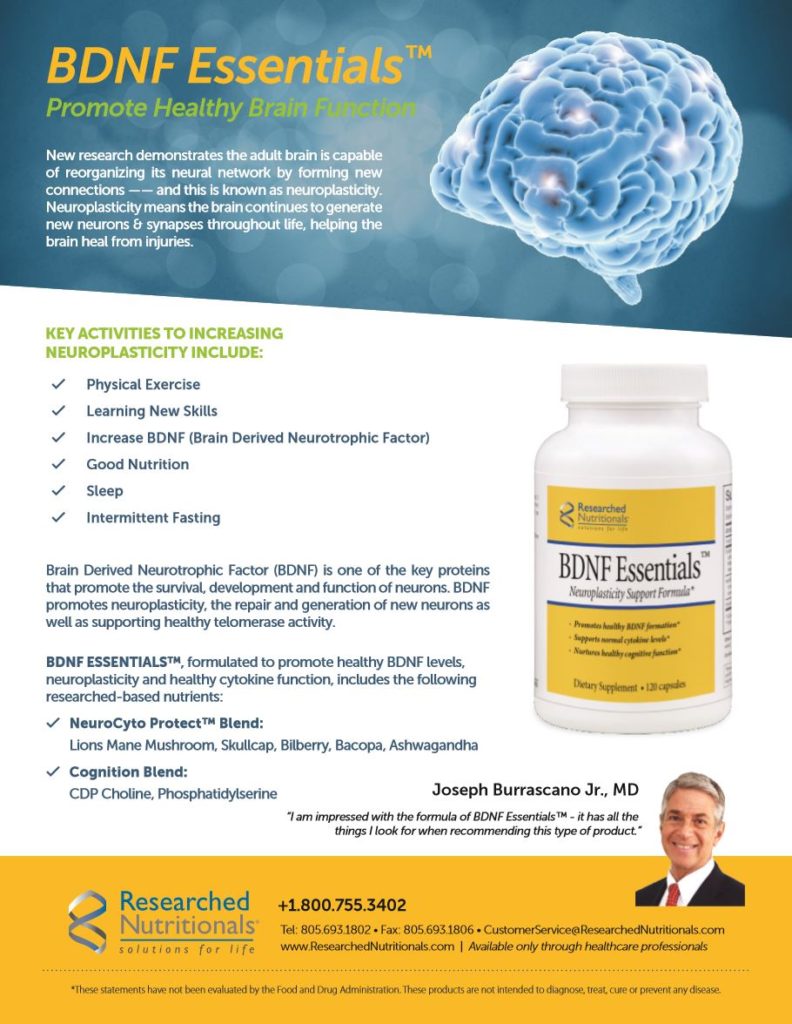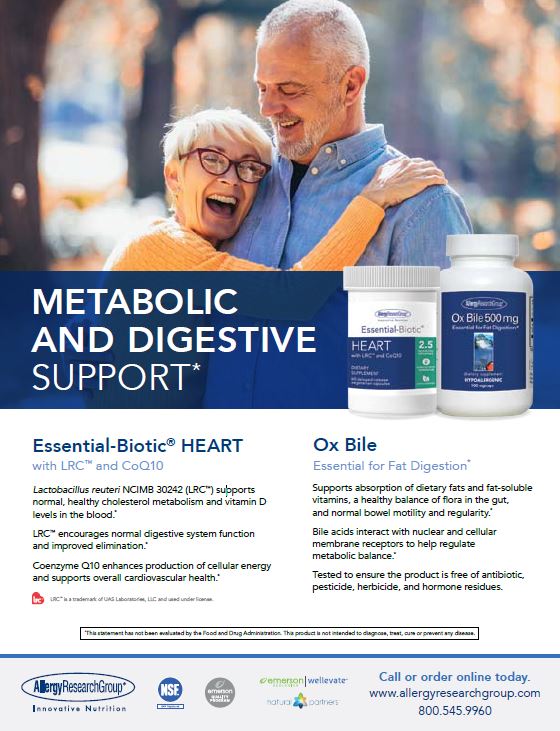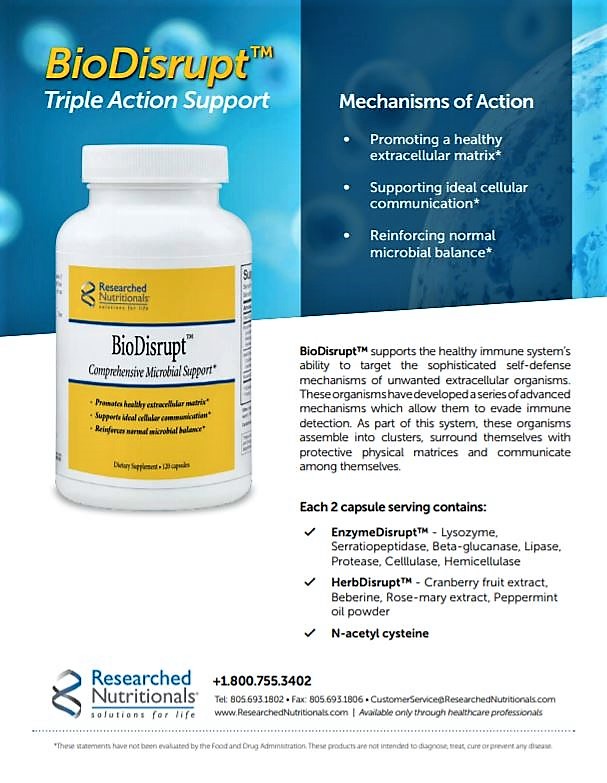by Carolyn Ross, MD, MPH
Mark presented in my office in withdrawal from opiate use disorder (heroin). He reported using up to 2 grams a day of heroin intravenously. His opiate use disorder began when he was 18, when he was injured in a football game and had to have shoulder surgery. He felt really good right away when taking Percocet. After his doctor stopped prescribing the prescription pain pill, he started buying it on the street. Three years later, he had escalated to using heroin, which was cheaper than Percocet. He had missed his chance to go to college on scholarship. He had served 6 months in jail for possession and he had been to one rehab facility, staying clean only 1 month after discharge. His parents were frustrated and angry that he could not stop using heroin. They had kicked him out of the house multiple times, but their fears of losing him meant that he kept getting back into their good graces, even if only for a month – until once again he would steal from them or relapse. Mark’s withdrawals included sweats, chills, goosebumps, runny nose and tearing eyes, nausea, tremors, dilated pupils, anxiety, and irritability. He wanted help but he also felt hopeless.
Mark’s story is not an uncommon one in my office, where I treat addictions, eating disorders, and mood and anxiety disorders. Opiate addiction in particular has become an epidemic in certain parts of the US. Addiction to prescription pain pills such as Percocet, Oxycontin, hydrocodone, Norco, and others has skyrocketed, with 4.3 million Americans abusing prescription pain pills in the last month. Most (50.5%) get their pain pills from a friend or relative and some (22.1%) get them from a doctor. Heroin is a powerful opiate drug that is cut or diluted with sugar, starch, powdered milk, quinine, or other drugs before snorting, injecting, or smoking. There are 4.8 million Americans who have used heroin in their lifetime. Over 200,000 people over age 12 have used heroin for the first time in the past year and over 400,000 people were regular users of heroin at the end of 2015.
It is not uncommon that individuals with substance use disorders will also have some type of mental illness. They are called “dual diagnosis” clients. Almost 8 million adults are in this category. Often symptoms of the mental health disorder are masked by substance use. It is important to address both disorders and to screen for other cooccurring disorders such as attention-deficit/hyperactivity disorder, trauma, posttraumatic stress disorder, and eating disorders when you treat a patient with a substance use disorder. People with substance use disorders also suffer from nutrient deficiencies, insomnia, and problems with digestion. Therefore, an integrative approach to treating substance use disorders and their cooccurring diagnoses is very important. The 8 Cornerstones of an Integrative Medicine Approach to treating addictions and other mental health disorders will give you a good overview of what a whole-person approach might look like:
- Make a complete diagnosis by taking a complete history and using screening tests to identify cooccurring diagnoses.
- Consider whether prescription medication is needed for stabilization of the patient.
- Use integrative therapies to help with body-mind integration, emotional release, and deeper healing.
- Teach patients new skills to cope with their stress and to regulate their emotions to reduce the risk of relapse.
- Identify nutritional deficiencies and evaluate gut health.
- Recommend psychotherapy to help patients gain insight into their behaviors and get at the root causes of their disorder.
- Have patients use supplements to replace missing nutrients, support mood, and improve gut health.
- Encourage physical activity to reconnect with body cues and to learn healthy, stress-reducing coping skills.
Unfortunately, in the space of this article, I will not be able to cover each of these Cornerstones. For more information, you can refer to my book, The Binge Eating and Compulsive Overeating Workbook (New Harbinger; 2008). I would like to mention that if you are thinking that many of these Cornerstones are not in your wheelhouse, you should consider having a team of people you could refer to who can help you treat the whole person. Your team may include an acupuncturist, nutritionist or dietician, chiropractor, therapist, psychologist, and others. Begin slowly and over time assess what you can do and what needs to be referred to other experts.
In the section below, I will cover some of the cornerstones that might help you to initiate a treatment plan for some of the complex patients whom you may see with addictions.
Make a complete diagnosis by taking a complete history and using screening tests to identify cooccurring diagnoses.
To screen your patients for substance use disorders (SUD) and other co-occurring disorders, there are a few very short screening tests that you can use. They can easily be included in your patient history form1,2:
Screening for SUD
1. Do you sometimes drink beer, wine or other alcoholic beverages?
o Yes o No
2. How many times in the past year have you had 5 (for men)/4 (for women) or more drinks in a day?
3. How many times in the past year have you used an illegal drug or a prescription medication for nonmedical reasons?
Simple Screen for Depression
In the past 2 weeks, how often have you been bothered by any of the following problems:
1. Little interest or pleasure in doing things
2. Feeling down, depressed, or hopeless
Scoring: 0 for not at all, 1 for several days, 2 for more than half the days, and 3 for nearly every day. The screen is positive if the client scores 3 or more points.
Screening for Eating Disorders3
1. How many diets have you been on in the past year?
2. Do you think you should be dieting?
3. Are you dissatisfied with your body size?
4. Does your weight affect the way you think about yourself?
A positive response to any of these questions warrants further evaluation. This may require you to refer the patient to a therapist or other provider who specializes in eating disorders.
Consider whether prescription medication is needed for stabilization of the patient.
It is important to be aware of the medications that are available for treating SUD and to know something about how they are used. The primary medications used in treating opiate use disorder are Suboxone and methadone. Both are used for detoxification from heroin or prescription pain pills and also used for opiate replacement/maintenance therapy. Suboxone is the newer of the two, the most well tolerated by patients, and rapidly becoming the first choice for opiate replacement therapy. This medication has literally saved lives of people who relapse repeatedly and are unable to deal with the cravings and obsessive thoughts about using drugs that lead to relapse. Methadone is a full opiate agonist, and overdose-related deaths due to respiratory depression are a significant concern. Suboxone is a combination of the partial opiate agonist buprenorphine and the opiate blocker naloxone. Because of its weak activity as an opiate agonist, it does not give the same euphoria or analgesia that methadone does. It causes less dysphoria than methadone and is better tolerated for this reason by patients. People with opiate use disorder who use opiates while taking Suboxone won’t get a high, and this could lead to overuse of opiates that can lead to overdose. Opiates should not be prescribed to people taking Suboxone unless they are off Suboxone for at least 2 or 3 days. Overall overdose potential is much lower with Suboxone. Suboxone has been a lifesaver to many opiate addicts because, if it is dosed correctly, people feel “normal” and are free of cravings and thoughts of using drugs, allowing them to stay in recovery longer without having to constantly fight cravings to use.
For alcoholics, naltrexone (an opiate blocker) in oral (Revia) or intramuscular (Vivitrol) form has some evidence of efficacy by reducing the desire to drink alcohol and decreasing heavy drinking.4 It may be a good adjunct to treating someone with alcoholism, for example, in conjunction with Twelve-Step meetings, therapy sessions, and other modalities. Naltrexone has also been used more recently for treatment of opiate use disorder. Opiate users have to be opiate-free for 10 days before using naltrexone or they will go into withdrawals. There is less evidence of the efficacy of naltrexone alone for opiate use disorder. However, the injectable Vivitrol form does offer 30-day coverage that is attractive to some.
Other uses of prescription medications could include the use of antidepressants and/or mood stabilizers, especially in individuals with bipolar disorder and those with depression who are unable to function. Discussion of these medications is beyond the scope of this article.
Identify nutritional deficiencies.
Alcohol is one of the major causes of nutritional deficiency in the US. It can account for up to 50% of dietary caloric intake and lead to deficiencies in B vitamins and vitamins C, K, A, and D. Other deficiencies include calcium, phosphorus, and magnesium. These deficiencies can lead to anemia, high or low blood glucose levels, decreased ability to produce neurotransmitters in the brain, and subsequent substance-induced mood disorders and other neurological disorders, including Wernicke/Korsakoff syndrome. Alco-holics also suffer from poor digestion and absorption of nutrients due to inflammation in the gut. If alcohol intake represents at least 25% of total calories, there can be significant decreases in carbohydrate, protein, and fat intake.5
Chronic marijuana use and “huffing,” or glue sniffing, can lead to zinc deficiency that affects smell and taste and the metabolism of the omega-3 fatty acids. Chronic dieters can also be zinc deficient. Zinc deficiency is also associated with depression and poor appetite. Cocaine abuse can lead to deficiencies in B vitamins and vitamin C. Stimulants can also cause loss of appetite, and many stimulant addicts are underweight and undernourished.6
Individuals with SUD who also have eating disorders can have nutritional deficits, including B vitamins, vitamins D, C, and E, calcium, copper, and essential fatty acids.
Alcohol and other substance use disorders and eating disorders are all associated with abnormal glucose metabolism. Dips in blood sugar can lead to depression, anxiety, moodiness, and cravings to use drugs, drink, or overeat.7 It is important to replace missing nutrients, stabilize blood sugar, support mood, and help heal the gut and brain in a targeted nutritional approach to treating these individuals.
Testing for nutritional deficits can be done through SpectraCell. Several studies have demonstrated a correlation between nutrition education and therapy during recovery and improved outcomes for individuals with substance use disorders.8
Use supplements to replace missing nutrients, support mood, and improve gut health.
Supplements can be used to replace missing nutrients detailed in the section above, to offer mood support and to treat depression and anxiety. Supplements can also be used to help improve gut health and brain health.
Once stable, some but not all of these patients may be treated with natural therapies for depression and anxiety. The regimen for mood support includes the use of the following supplements for maintenance therapy:
- Vitamin D – In alcoholics, serum vitamin D levels below 30 ng/ml are associated with greater long-term mortality.9 Vitamin D deficiency can be associated with musculoskeletal pain syndromes (such as fibromyalgia), depression and other mood disorders, loss of bone density (which people with eating disorders and alcohol use disorders are already at higher risk for), and decreased immune function.
- Omega 3 fatty acids – Studies have linked essential fatty acid deficiency to anxiety, relapse, and suicidality. Up to 63% of all completed suicides suffered from substance use disorders.10 Omega-3 fatty acids have been shown in studies to reduce the risk for suicide.11 Low intake of omega-3s (DHA) also is associated with higher risk for alcoholic fatty liver in animal models.12 A higher omega-3 level in substance abusers was associated with decreased anxiety and anger and lower rates of relapse.13
- B-complex vitamin – B-vitamins are necessary cofactors in the production of neurotransmitters in the brain. Symptoms of B-vitamin deficiencies can include poor appetite, fatigue, poor sleep, weakness, irritability and depression.
For depression, you can choose one of the supplements below:
- SAMe, a methyl donor that contributes to the synthesis, activation and/or metabolism of such compounds as hormones, neurotransmitters, nucleic acids, proteins, phospholipids, and certain drugs. SAMe is superior to placebo and possibly as effective as prescription antidepressants. Dosages range from 400 to 1600 mg per day given in 2 doses.
- For bipolar disorder, TrueHope’s EMPowerplus has been shown in a number of studies to be effective for bipolar disorder, attention deficit disorder, and possibly major depressive disorder.
- 5-HTP – can help with sleep and mood in doses of 100–300 mg daily. 5-HTP is a serotonin precursor so caution should be used when prescribing 5-HTP in individuals who are on an SSRI or taking other serotonin precursors such as L-tryptophan.
- St. John’s wort – works mainly on serotonin system. Dosage should be 300 mg three times daily. It is highly effective for mild-moderate depression and the most widely used antidepressant in Europe.
Caution: All of these supplements can trigger mania in individuals with bipolar disorder.
Patient with anxiety may benefit from:
- L-theanine 200–400 mg per day as needed
- Valerian – 300–400 mg 2 to 3 times daily
Insomnia can be treated with:
- Melatonin – 1–3 mg at bedtime
- Valerian – 900–1600 mg at bedtime
- Kava-kava tea made from bulk root
Supplements for Individuals with Substance Use Disorders
Here are some other specific nutrients shown in research to have benefits to those with SUD:
1. Taurine: 1 gram 3 times a day reduces the toxic byproducts found in alcohol and may decrease the severity of alcohol withdrawal symptoms. Taurine may also reduce the risk of addiction in cocaine abusers.
2. Acetyl-L-carnitine (2 grams daily) may improve memory in abstinent alcoholics.14
3. Co-Q10 may reduce neurotoxicity caused by methamphetamine and cocaine.
4. N-acetyl cysteine (NAC) may reduce cravings for cocaine.15
Supplements for Gut and Brain Health
Dysfunctions in the “gut–brain axis” may be involved in a number of metabolic and mental disorders. The gastrointestinal tract has over 100 million neurons and has the second largest collection of neural tissue in the body (after the brain). Stress can affect the homeostasis between the gut-brain and the stress hormone cortisol can increase gut permeability. As well, imbalances in the gut microbiome can produce inflammatory molecules called cytokines that can have a significant effect on brain function, leading to depression, anxiety, and cognitive dysfunction.16 GI complaints are present in half of individuals with substance use disorders and eating disorders. It is often difficult to distinguish true GI diseases from complaints related to eating disorders, the majority of which resolve with refeeding.17 Some GI complaints in those with SUD will be resolved with abstinence but this may take time. Supplements can help improve gut function sooner:
- The use of pancreatic digestive enzymes may be useful in conditions associated with poor digestion, including eating disorders. Digestive enzymes help break down carbohydrates, fat and protein. A small study done in an inpatient eating disorder unit of patients on a combination of a plant-based pancreatic enzyme product and probiotics resulted in a decrease in reports of GI complaints (from 15% to 5%) and a decrease in the use of conventional medications (from 15% to 2%) to treat GI complaints.18
- Constipation is a common side effect in opiate use disorder. The easiest treatment is the daily use of magnesium oxide 400–800 mg at bedtime. This should be taken as a preventive therapy rather than only taken when constipation occurs.
- Studies in probiotics used in individuals with eating disorders and SUD showed a significant decrease in GI complaints.19 Probiotics have also been shown to restore bowel flora and improve liver enzymes in alcoholics.20 Consumption of foods high in probiotics can also improve brain function.21 Bacteria in probiotics also produce anti-inflammatory cytokines that can have a positive impact on mood. The use of probiotics and a friendly yeast (Saccharomyces boulardii) enhance the production of salivary IgA (sIgA) which can be decreased by emotion, frustration and stress. sIgA helps fight inflammation that can cause depression.
- To reduce inflammatory cytokines, use vitamins C, E, and N-acetyl cysteine, green and black tea, and curcumin.
Brain Healing
Brain-derived neurotrophic factor (BdNF) is a protein that is important for survival of nervous system neurons and can serve as a marker of brain health. The more BDNF present, the healthier the brain is. Exposure to the stress hormone cortisol has been shown to decrease BdNF. BdNF regulates the psychological dependence in drug addiction. It is involved in the brain reward circuitry that is negatively affected by drugs of abuse. Stress, smoking, poor sleep, inflammation in the body, and low or high blood sugar all decrease BdNF. Modern foods and the modern lifestyle accelerate brain decay by decreasing BdNF.22
A newer supplement for brain healing is the natural product Synaptamine, developed by Ken Blum, who has been a noted researcher and coined the phrase reward deficiency syndrome to describe the impulsive and compulsive disorders and personality disorders associated with a decrease in dopamine (DRD2) receptors in the brain.
Synaptamine contains amino acids, cofactors, and vitamins that help improve reward deficiency syndrome. It is unclear at present whether long-term abstinence is better with the use of Synaptamine; however, it has some anecdotal reports of efficacy in detoxing patients from opiates and other drugs. Studies on earlier versions of this product showed efficacy in obese patients who had been on severe calorie-restricted diets (Optifast) in terms of reducing weight regain and binge behavior. This product is available online and shows a lot of promise in helping the brain heal from addictions.
Conclusion
Substance use disorders, particularly opiate use disorder, are a significant problem in our society. An integrative approach to treating SUD and their cooccuring disorders can enhance modalities such as Twelve-Step meetings, psychotherapy, and other approaches. Below are listed a summary of recommendations that form the basis of this approach.
Recommendations
1. Avoid rancid fats and trans fats; use good fats such as olive oil and omega-3-containing foods.
2. Eat more foods that are anti-inflammatory such as fruits, vegetables, nuts, and seeds.
3. Add spices that are anti-inflammatory; e.g., ginger and turmeric.
4. Green and black tea should be part of an anti-inflammatory diet.
5. Consume probiotics: bifidobacteria, lactic acid bacteria, Saccharomyces boulardii.
6. Take a good multivitamin and -mineral product to replace missing nutrients and offer antioxidants such as Vitamins C and E as noted above.
7. Support mood with omega-3 fatty acids, a B-complex vitamin, and vitamin D.
8. Consider Synaptamine to help the brain heal.
9. Use specific supplements as listed in this article for insomnia, depression, anxiety, constipation, etc.
10. To increase BdNF:
- Exercise regularly.
- Keep your blood sugar steady by eating frequent small meals and decreasing your intake of sugary foods and processed foods.
- Get enough sleep.
- Take omega-3 fatty acids.
Notes
1. Smith PC et al. A single-question screening test for drug use in primary care. Arch Intern Med. 2010 Jul 12;170(13):1155–1160
2. Anstine D, Grinenko D. Rapid screening for disordered eating in college-aged females in the primary care setting. J Adolesc Health. 2000;26:338–342.
3. Ibid.
4. Rösner S, Hackl-Herrwerth A, Leucht S, Vecchi S, Srisurapanont M, Soyka M. Opioid antagonists for alcohol dependence. Cochrane Database Syst Rev. 8 December 2010;12:CD001867. doi: 10.1002/14651858.CD001867.pub2.
5. Lieber CS. The influence of alcohol on nutritional status. Nutr Rev. 1988;46(7):241–254.
6. Santolaria-Fernandez et al. Nutritional assessment of drug addicts. Drug Alcohol Depend. 1995 Apr;38(1):11–18.
7. Althaus CB. The glucose factor: diet and addiction. Foodservice Director. 2001;14(10):62.
8. Grant LP et al. Nutrition eduction is positively associated with substance abuse treatment outcomes. J Am Diet Assoc. 2004 Apr;104(4):604–610.
9. Quintero-Platt G, et al. Vitamin D, vascular calcification and mortality among alcoholics. Alcohol Alcohol. 2015 Jan;50(1):18–23.
10. Schneider B. Substance use disorders and risk for completed suicide. Arch Suicide Res. 2009;13(4):303–316.
11. Sublette M et al. Omega-3 polyunsaturated essential fatty acid status as a predictor of future suicide risk. Am J Psychiatry. 2006;163:1100–1102.
12. Song BJ, et al. Prevention of alcoholic fatty liver and mitochondrial dysfunction in the rat by long-chain PUFAs. J Hepatol. 2008 Aug;49(2):262–273.
13. Buydens-Branchey L and Branchey M. n-3 polyunsaturated fatty acids decrease anxiety feelings in a population of substance abusers. J Clin Psychopharmacol. 2006 Dec;26(6):661–665.
14. Lake J. Alcohol and Drug Abuse: The Integrative Mental Health Solution.2015. Available at http://www.amazon.com/Alcohol-Drug-Abuse-Integrative-non-medicationebook/dp/B010W2FV0E/ref=sr_1_11?ie=UTF8&qid=1447364564&sr=8-11&keywords=james+lake+md.
15. La Rowe SD et al. Is cocaine desire reduced by NAD? Am J Psych. 2007;164(57):1115–1117.
16. Montiel-Castro AJ et al. The microbiota-gut-brain axis. Front Integr Neurosci. 2013;7:70.
17. McClain CJ, Humphries LL, et al. Gastrointestinal and nutritional aspects of eating disorders. J Am Coll Nutr. 1993;12(4):466–474.
18. Ross C, Herman PM, et al. Evaluation of integrative medicine supplements for mitigation of chronic insomnia and constipation in an inpatient eating disorders setting. Explore. 2008;4(5):315–320.
19. Ibid.
20. Kirpich IA et al. Probiotics restore bowel flora and improve liver enzymes in human alcohol-induced liver injury: a Pilot study. Alcohol. 2008 Dec;42(8):675–682.
21. Changing gut bacteria through diet affects brain function, UCLA study shows [online press release]. EurekAlert. http://www.eurekalert.org/pub_releases/2013-05/uoc–cgb052813.php.
22. Crawford M, Cadogan OU. Nutrition and Mental Health: a Handbook. Pavilion Publishing (Brighton) Ltd.; 2008, 2009.

Dr. Ross is a nationally known author, speaker, and expert in the field of eating disorders and integrative medicine. She went to the University of Michigan Medical School, completed a residency in preventive medicine at Loma Linda University, and set up practice in San Diego, California, where she eventually opened three women’s centers, and practiced primary care and office gynecology. These centers integrated the best of Western medicine with complementary and alternative therapies such as yoga, acupuncture, chiropractic, and nutrition counseling. She developed and ran a weight management program for weight loss therapy that offered a holistic approach to treating obesity. During that time, she also served as the medical director of the Rader Institute’s inpatient eating disorder program. Dr. Ross later completed a two-year fellowship the University of Arizona’s Center for Integrative Medicine, studying with Dr. Andrew Weil. Her path then led her to work as the head of the Eating Disorders Program and the Integrative Medicine Department at world-renowned inpatient hospital Sierra Tucson, where she pioneered the integrative medicine approach to eating disorder treatment. She currently works in private practice in Denver, Colorado, as a weight loss therapist, addiction medicine specialist, and Suboxone doctor who specializes in opioid addiction treatment. She also is a consultant for treatment centers across the country on eating disorders and integrative medicine. Her most recent book is The Binge Eating & Compulsive Overeating Workbook: An Integrative Approach to Overcoming Disordered Eating.









